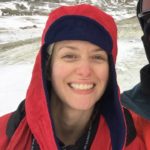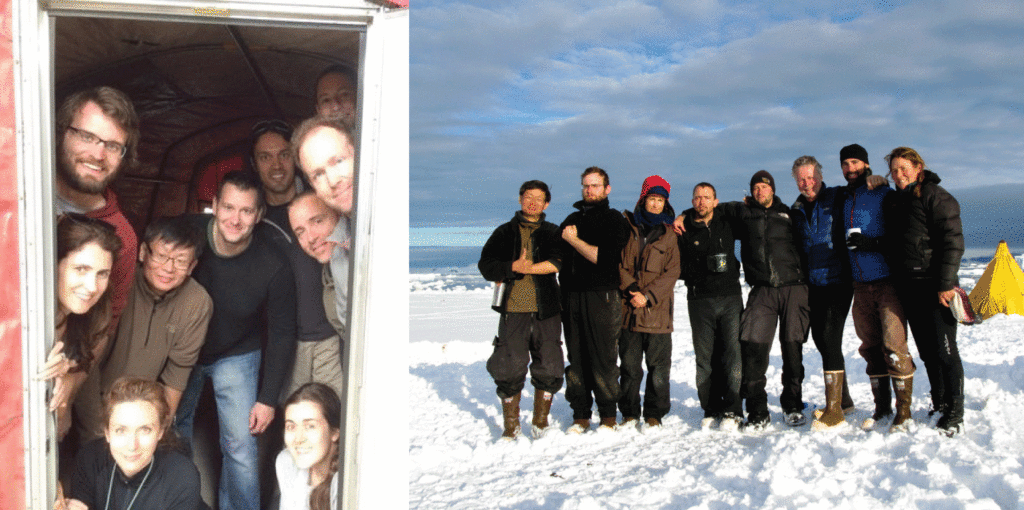
LEFT: Some of the AP3 2016 field team in Punta Arenas, Chile, after a practice run building one of the larger field shelters. From left, back row: Eric Gorscak, Meng Jin, Matt Lamanna, Zubair Jinnah, Chris Torres; front row: Julia Clarke, Kerin Claeson, Abagael West, Eric Roberts, Pat O’Connor. RIGHT: 2011 Field Team. From left: Meng Jin, Eric Gorscak, Julia Clarke, Eric Roberts, Matt Lamanna, Ross MacPhee, Joe Sertich
The AP3 is made up of a team of scientists who specialize in a diversity of paleontological and geological disciplines. Our team consists of students, postdoctoral researchers, professors, and museum curators in the USA (Pennsylvania, New York, Texas, Ohio, Illinois, Colorado, and Washington), Australia, South Africa, and the United Kingdom. Collectively, we have expertise in all major vertebrate groups that have been discovered from the Cretaceous and Paleogene of Antarctica thus far, as well as proficiency in a variety of geological methods and techniques.
Meet the team:
Matt Lamanna | Julia Clarke | Kerin Claeson
Pat O’Connor | Judd Case | Eric Roberts
Zubair Jinnah | Steve Salisbury | Ross MacPhee
Meng Jin | Abagael West | Eric Gorscak
Christopher Torres | Jane Francis | Joe Sertich
Matthew Koshmrl | Cara Ferrier | Brett Pickering
 Dr. Matt Lamanna
Dr. Matt Lamanna
Carnegie Museum of Natural History
Pittsburgh, Pennsylvania, USA
Since 2012, Matt Lamanna has served as the lead Principal Investigator and project director of the Antarctic Peninsula Paleontology Project. He is a paleontologist and the principal dinosaur researcher at Carnegie Museum of Natural History in Pittsburgh. He received his B.Sc. from Hobart College in 1997 and his M.Sc. and Ph.D. from the University of Pennsylvania in 1999 and 2004, respectively. Within the past 18 years, he has directed or co-directed field expeditions to Antarctica, Argentina, Australia, China, Egypt, and Greenland that have resulted in the discovery of multiple new species of dinosaurs and other Cretaceous-aged animals. Matt and colleagues’ most significant finds include the gigantic new titanosaurian sauropods (long-necked plant-eating dinosaurs) Dreadnoughtus, Notocolossus, and Paralititan. He also led the study of the bizarre bird-like dinosaur Anzu wyliei, also known as the ‘Chicken from Hell,’ and co-discovered dozens of beautifully-preserved fossils of the ~120 million-year-old bird Gansus yumenensis in China. Matt served as chief scientific advisor to Carnegie Museum of Natural History’s $36M dinosaur exhibition, Dinosaurs in Their Time, and has made TV appearances on PBS (NOVA), the Discovery Channel, the History Channel, A&E, the Science Channel, and more. His hobbies include fishing, kayaking, cross-country skiing, running, watching NFL football, and playing bass guitar (poorly). He lives in Seven Fields, Pennsylvania with his wife Mandi. AP3 expeditions: 2009, 2011, 2016.
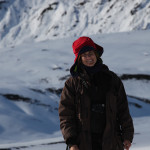 Dr. Julia Clarke
Dr. Julia Clarke
The University of Texas at Austin
Austin, Texas, USA
AP3 Principal Investigator Julia Clarke is a paleontologist and evolutionary biologist who studies birds and other theropod dinosaurs to better understand major transitions in the history of life. She is particularly interested in how structures in living animals developed and how novel ways of moving—such as avian flight and wing-propelled diving—evolved. Julia is a Professor in the Department of Geological Sciences in the Jackson School of Geosciences at The University of Texas at Austin. She is also a John A. Wilson Centennial Fellow in Vertebrate Paleontology and a member of the Graduate Faculty in Ecology, Evolution, and Behavior at UT.
Julia has a Ph.D. from the Department of Geology and Geophysics at Yale University and a B.A. in comparative literature and geobiology from Brown University. She currently serves as co-editor-in-chief of the Journal of Anatomy and is an associate editor of Paleobiology. She has published numerous technical papers, including nine in Nature or Science, and has been recognized for excellence in research, undergraduate teaching, and outreach. In 2005, Julia described Vegavis iaai, an extinct Antarctic bird species that is related to ducks and geese. AP3 expeditions: 2011, 2016.
Philadelphia College of Osteopathic Medicine
Philadelphia, Pennsylvania, USA
AP3 Co-Principal Investigator Kerin Claeson is an Assistant Professor of Anatomy in the Department of Biomedical Sciences at the Philadelphia College of Osteopathic Medicine. She received her Ph.D. from The University of Texas at Austin in 2010, her M.Sc. from the University of Massachusetts in 2005, and her B.Sc. from Stony Brook University in 2001. Her research combines the disciplines of paleontology, comparative anatomy, and development to formulate and test phylogenetic hypotheses of vertebrate interrelationships. She is particularly concerned with assessing the role that fossils play in the interpretation of modern biodiversity and phylogenetics, as well as the role that phenotypic variation plays in the interpretation of vertebrate fossils and systematics. Her studies include morphological changes across ontogeny and over deep time, which offer a way to investigate pattern and process in evolution, and help to generate more comprehensive hypotheses about how form and function interact. She makes extensive use of museum collections worldwide for her specimen-based research.
Much of Kerin’s research has focused on cartilaginous and bony fishes. Fishes are a practically ubiquitous group of vertebrates with the potential to help formulate hypotheses that hold relevance for all other vertebrate groups. With the propensity for an even distribution across a vast geographic area, biostratigraphic data for other vertebrates can be enhanced dramatically. Follow Kerin on Twitter @kmcfishlab. AP3 expeditions: 2016.
Dr. Pat O’Connor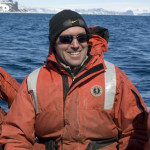
Ohio University
Athens, Ohio, USA
AP3 Principal Investigator Pat O’Connor is a Professor of Anatomical Sciences at Ohio University. He received his Ph.D. from Stony Brook University in 2003, completing a project examining the evolution of postcranial skeletal pneumaticity in avian and non-avian theropod dinosaurs. Pat’s general research interests include (1) the evolution of birds, (2) the relationship between osteological features and different soft-tissue systems (e.g., pulmonary, neurosensory), and (3) the biogeographic history of terrestrial vertebrates on Gondwanan landmasses during the latter half of the Mesozoic.
Pat has conducted field research in various part of the world, including ongoing projects in Tanzania, Madagascar, Zimbabwe, Egypt, and Antarctica. These field projects aim to characterize Mesozoic terrestrial vertebrate faunas, particularly Cretaceous-aged dinosaurs, birds, and crocodilians, in an effort to understand relationships between biotic diversity and large-scale environmental (e.g., climate, landform alterations) factors. In recent years Pat has been involved with the discovery and description of the titanosaurian sauropod Rukwatitan bisepultus and the crocodilians Pakasuchus kapilimai and Rukwasuchus yajabalijekundu from the middle Cretaceous of Tanzania, the bizarre gondwanatherian mammal Vintana sertichi from the Maastrichtian of Madagascar, and several other Mesozoic and Cenozoic animals new to science. Follow him on Twitter @pmo2112. AP3 expeditions: 2009, 2016.
 Dr. Judd Case
Dr. Judd Case
Eastern Washington University
Cheney, Washington, USA
AP3 Co-Principal Investigator Judd Case is a Professor of Biology and former Dean for the College of Science, Health & Engineering at Eastern Washington University. Judd received his Ph.D. from University of California, Riverside in Evolutionary Biology under Michael Woodburne. His research has centered on vertebrate paleontology to answer questions in the areas of evolution and biogeography. His emphasis has been on marsupials in particular, but includes the evolution and biogeography of Gondwanan plants and animals especially the effects of climate on diversity and distribution.
Judd has extensive Antarctic field experience having conducted 9 field seasons in the Antarctic Peninsula, beginning in 1983. He and his research team through funding by the National Science Foundation, have found two new dinosaurs in Antarctica including a “Jurassic Park-like” raptor or deinonychosaur in 2003 and a duck-billed dinosaur or hadrosaur in 1997, both finds added new families of dinosaurs to the list of Antarctic dinosaurs. His teams have also uncovered critical fossils indicating that the Antarctica maybe the center for the origin of modern bird groups and many examples of marine reptiles including a unique skeleton of a baby plesiosaur (2005). Additionally, he has had many field expeditions to Australia (since 1982) investigating both marsupials and dinosaurs, and it is these trips that Dr. Case has regularly taken both graduate and undergraduate students out into the field. This past summer (2016), he was honored by the Scientific Committee on Antarctic Research (SCAR) as one of two professors worldwide to receive their prestigious Visiting Professor Award for 2016-17.
 Dr. Eric Roberts
Dr. Eric Roberts
James Cook University
Townsville, Queensland, Australia
Eric Roberts is an Associate Professor in the College of Science, Technology & Engineering at James Cook University. His primary research focuses on reconstructing the sedimentary, tectonic, and faunal histories of late Mesozoic and Cenozoic ecosystems. Areas of interest include the East African Rift System, the Cradle of Humankind in South Africa, the Eromanga and Galilee basins of Australia, the Kaiparowits Basin of the western USA, the James Ross Basin of Antarctica, and a suite of other Gondwanan basins.
Eric’s research involves facies and provenance analysis (sandstone petrography and detrital zircon geochronology) along with stratigraphy and geochronology to interpret and reconstruct tectonic and depositional histories. He works in close collaboration with paleontologists, paleoanthropologists, and paleobotanists to provide geologic context to the floras and faunas preserved within these ancient ecosystems and basins. This holistic basin analysis approach is critical to testing a variety of hypotheses related to past environments and climates, drainage histories, paleobiogeography, and the evolution and extinction of vertebrate and plant communities during crucial time periods in Earth history. Through this research, Eric also maintains and fosters collaborative links with industry. Follow him on Twitter @EricRobertsJCU. AP3 expeditions: 2011, 2016.
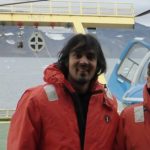 Dr. Zubair Jinnah
Dr. Zubair Jinnah
University of the Witwatersrand
Johannesburg, South Africa
AP3 geologist Zubair Jinnah is a Lecturer in Sedimentology at the University of the Witwatersrand. His research interests are in sedimentology and stratigraphy, particularly in fossil-rich sedimentary basins. His previous work has involved providing age constraint and environmental context to fossil-bearing rocks, as well as understanding large-scale controls on sedimentation and basin dynamics in a number of Phanerozoic rock successions. AP3 expeditions: 2016.
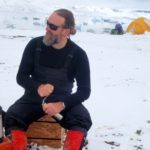 Dr. Steve Salisbury
Dr. Steve Salisbury
The University of Queensland
Brisbane, Queensland, Australia
AP3 Co-Principal Investigator Steve Salisbury is a Senior Lecturer in the School of Biological Sciences at The University of Queensland and a Research Associate at Carnegie Museum of Natural History in Pittsburgh. Born in eastern Australia’s scenic Blue Mountains in 1972, he studied biology and geology as an undergraduate at the University of Sydney, receiving the Edgeworth David Award for Palaeontology in 1993. He then moved to the University of New South Wales, where he completed a 1st Class Honours thesis on fossil crocodilians from Murgon in southeastern Queensland under the supervision of Drs. Mike Archer and Paul Willis.
Subsequently, while still affiliated with the University of New South Wales, Steve went to Germany and the UK to complete a Ph.D. on crocodilian locomotor evolution under Dr. Eberhard Frey. He returned to Australia in 2000 to pursue a lifelong dream of searching for Australian dinosaurs, a dream that was fulfilled in part during 2001 with his involvement in the discovery of (at the time) Australia’s largest dinosaur, ‘Elliot’ the sauropod. Steve now conducts regular expeditions to Cretaceous vertebrate localities in central-western Queensland and the Dampier Peninsula in the Kimberley region of Western Australia. He is also involved in field-based research on the South Island of New Zealand and the Antarctic Peninsula.
Steve’s research focuses on the evolution of Gondwanan continental vertebrates, in particular dinosaurs and crocodilians. He’s also interested in vertebrate biomechanics and in using extant animals to better understand the anatomy, behavior, and evolution of extinct species. Follow him on Twitter @implexidens. AP3 expeditions: 2009, 2016.
 Dr. Ross MacPhee
Dr. Ross MacPhee
American Museum of Natural History
New York, New York, USA
AP3 Principal Investigator Ross MacPhee is a Curator and Professor of Mammalogy at the American Museum of Natural History. He was the director of the AP3 from 2006–2011. His leading interests are paleobiogeography, extinction, and cranial developmental morphology. With regard to paleobiogeography, he has worked on questions related to the mammalian and general vertebrate diversity of the West Indies, Madagascar, and, most recently, Antarctica, across time intervals from late Mesozoic to late Neogene. Ross also studies recent mammalian extinctions, concentrating on the loss of megafaunal species during the end-Pleistocene in North America and northern Asia. His research and that of his colleagues seeks to clarify the causal patterns behind these losses, most recently by studying population dynamics of fossil species using ancient DNA methods. The purpose of cranial developmental morphology is to explore the ontogenetic background of various character states expressed in adult forms. Ross’ work here involves interpretation of late fetal and adult stages of placental mammals, with increasing emphasis on micro-CT scanning as an aid to visualization. AP3 expeditions: 2009, 2011, 2016.
 Dr. Meng Jin
Dr. Meng Jin
American Museum of Natural History
New York, New York, USA
Meng Jin is the Curator-in-Charge of the Division of Paleontology at the American Museum of Natural History. He studies the morphology, systematics, and evolution of mammals, particularly early (Mesozoic and Paleogene) mammals such as haramiyidans, eutriconodontans, multituberculates, and early therians. Within therian mammals, his research focuses on Glires, the group that includes rodents and lagomorphs. His research seeks to address issues related to higher-level mammalian phylogeny, the origin of Glires, the evolution of mammalian dentitions and middle and inner ears, and the relationship of mammal evolution to changing environments throughout Earth history. He also works on Tertiary stratigraphy, with focus on the biochronology (land mammal ages) of terrestrial rocks in Asia. Most of Dr. Meng’s fieldwork takes place in China – primarily in Inner Mongolia, Xinjiang Province in the northwest, and southern China. AP3 expeditions: 2011, 2016.
 Dr. Abagael West
Dr. Abagael West
Carnegie Museum of Natural History
Pittsburgh, Pennsylvania, USA
Abagael West is a paleontologist who specializes in the study of fossil mammals. She received her B.A. in Zoology from the University of Cambridge in 2010, and her PhD in 2017 from Columbia University. She is currently a postdoc at Carnegie Museum of Natural History. Her research is on the evolution and relationships of Notoungulata, an extinct order of hoofed mammals from South America. She is particularly interested in using ancient DNA and protein sequences to test and augment traditional paleontological hypotheses based on morphology.
Abagael’s favorite accomplishment to date is She Found Fossils, an illustrated compendium of biographies of female paleontologists past and present. She and Dr. Eugenia Gold conceived, designed, and successfully funded the publication of this book in three languages. It is scheduled for release in December 2017. Follow her on Instagram @abagael_etc, and visit http://www.drneurosaurus.com for more info about She Found Fossils. AP3 expeditions: 2016.
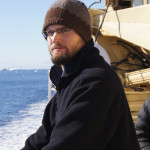 Dr. Eric Gorscak
Dr. Eric Gorscak
Field Museum of Natural History
Chicago, Illinois, USA
Eric Gorscak is a paleontologist and doctoral student in Pat O’Connor’s lab at Ohio University. He is currently conducting research on the faunal patterns and evolutionary history of African titanosaurian sauropods during the ‘middle’ Cretaceous, a time of significant geological activity concerning the breakup of Gondwana. A portion of his research falls under the larger Rukwa Rift Basin Project in southwestern Tanzania. Additional research interests includes the exploration and implementation of Bayesian-based phylogenetic methods within paleontology in order to estimate divergence dates and investigate paleobiogeographical scenarios. Follow Eric on Twitter @EricGorscak. AP3 expeditions: 2011, 2016.
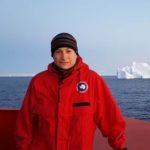 Christopher Torres
Christopher Torres
The University of Texas at Austin
Austin, Texas, USA
Christopher Torres is a Ph.D. student in Julia Clarke’s lab at The University of Texas at Austin. A paleontologist and geneticist, Chris integrates the fossil record and molecular data to investigate the evolution of birds and specializes in the evolution of flamingos. Most notably, Chris and colleagues established the interrelationships and ages of extant flamingos and redescribed the earliest known filter-feeding species, the 25 million-year-old Harrisonavis croizeti. Chris also studies the evolution of the Palaeognathae, the clade of birds which includes the ratites such as ostriches and kiwis as well as tinamous. In particular, he is interested in the patterns of flight loss, gigantism, and brain shape evolution which are unique to this clade. He received his Bachelor’s degree from North Carolina State University in 2009 and his Master’s from the University of North Carolina at Wilmington in 2014. He lives in Austin, Texas. Follow him on Twitter @Torresaurus_rex. AP3 expeditions: 2016.
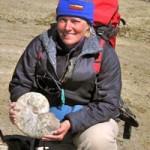 Dr. Jane Francis
Dr. Jane Francis
British Antarctic Survey
Cambridge, United Kingdom
Collaborating scientist Jane Francis is the Director of the British Antarctic Survey. Her principal research interests are in paleoclimatology and paleobotany. She specializes in the study of fossil plants, especially wood, and their use as tools for climate interpretation and information about past biodiversity. Her current work focuses on understanding past climate change during both greenhouse and icehouse periods, particularly in the polar regions, the areas of Earth that are most sensitive to climate change.
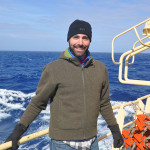 Dr. Joe Sertich
Dr. Joe Sertich
Denver Museum of Nature and Science
Denver, Colorado, USA
AP3 Co-Principal Investigator Joe Sertich is a vertebrate paleontologist who looks at the effects of global changes, such as climate and shifting continents, on the evolution of dinosaurs and crocodilians. During the Mesozoic, drifting continents and fluctuating sea levels created a dynamic global system, influencing the distribution of animals and the evolution of terrestrial ecosystems. New fossil discoveries in western North America, Madagascar, and Africa are the focus of his research. Joe received his Ph.D. in 2011 from Stony Brook University. In 2010, he discovered the skull of an important new Cretaceous-aged mammal from Madagascar that other scientists named Vintana sertichi in his honor. AP3 expeditions: 2011.
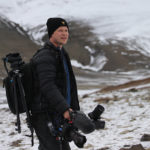 Matthew Koshmrl
Matthew Koshmrl
The University of Texas at Austin
Austin, Texas, USA
Matthew Koshmrl is a filmmaker and cinematographer born and raised in Minnesota. Specializing in documentary film, he has produced films around the United States and internationally. He joined the AP3 team in Antarctica to document their 2016 expedition. After graduating with a B.A. in film production from Emerson College, Matt moved to Daegu, South Korea where he continued his work as a filmmaker at Daegu Compass, an arts and culture magazine and website. While living abroad, Matt was the cinematographer on short films featured in screenings throughout South Korea, including the Daegu Independent Short Film Festival. While in graduate school at The University of Texas at Austin, Matt has focused on documentary films that explore the evolution of tradition, individual, and national identity and unseen processes. He is currently working on his thesis film, which follows the disputed sovereignty over Dokdo, an island that has been one of the greatest points of contention between South Korea and Japan since the end of World War II. AP3 expeditions: 2016.
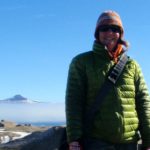 Cara Ferrier
Cara Ferrier
Antarctic Support Contract
Centennial, Colorado, USA
Cara Ferrier is the Peninsula Field Supervisor for the Lockheed Martin Antarctic Support Contract. She has been part of the United States Antarctic Program (USAP) since 2004, first serving as Assistant Laboratory Supervisor at Palmer Station. Her background—in biology, conducting research and camping at high altitudes in the Andes, field surveys utilizing aircraft, and emergency management—aided her in overseeing the USAP’s continental field camps for eight years. She was responsible for 11 field camps and over 200 people in the field at a time. She is now a project manager who works on implementing USAP field research projects on and around the Antarctic Peninsula. When not sorting out complicated logistics and running USAP field camps, she is hiking with her dog or photographing the world. AP3 expeditions: 2016.
 Brett Pickering
Brett Pickering
Antarctic Support Contract
Centennial, Colorado, USA
Brett Pickering was a field camp supervisor working for the Lockheed Martin Antarctic Support Contract during the 2016 AP3 field season. He has worked seasonally in various roles for the United States Antarctic Program beginning in 1999, which have ranged from loading and unloading LC-130s at Amundsen-Scott South Pole Station to serving as the winter site manager at Palmer Station. The majority of his Antarctic experience has been working for Dr. William Fraser’s penguin and seabird research program. He has a M.S. in biology and has worked in on all seven continents for various research projects. He currently works seasonally as a commercial lobster fisherman and periodically for Scripps Institution of Oceanography collecting ocean temperature data during crossings of the Pacific Ocean. He is father to Lukas (eight) and Sophia (six), both of whom are very excited that their papa helped the AP3 team find fossils in Antarctica. AP3 expeditions: 2016

